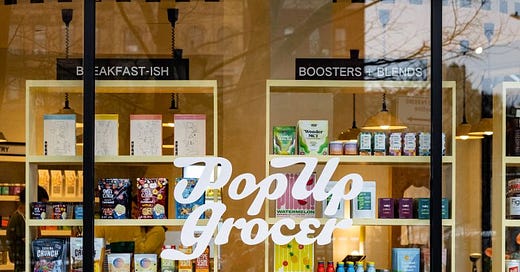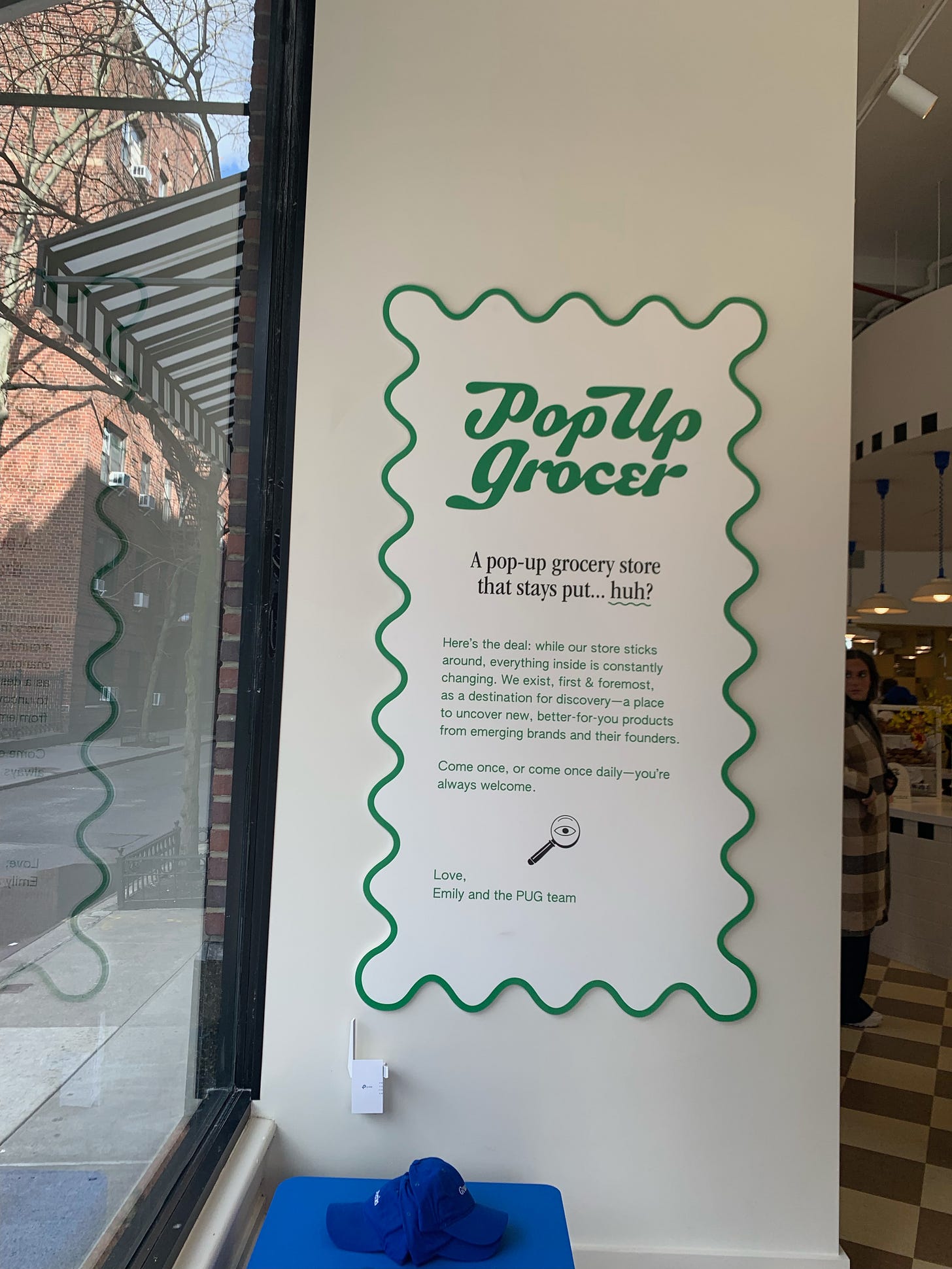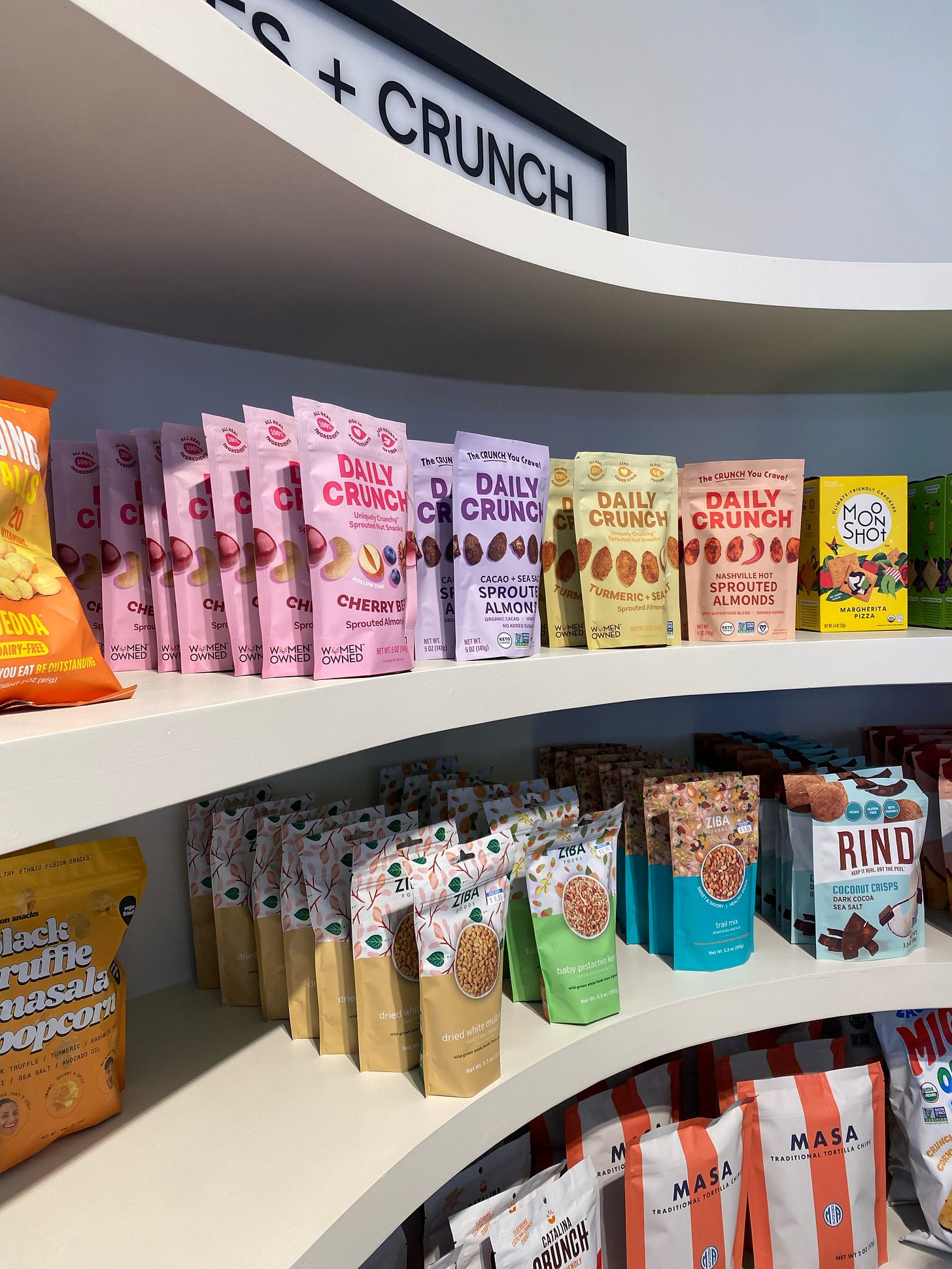2-min read
I recently sat down with Emily Schildt, CEO and founder of Pop Up Grocer. PUG is a curated retail store concept that gets your brand exposure and visibility. If you’re trying to drive awareness on a scrappy budget, your brand might be ready for the pop-up experience.
Pop Up Grocer got started four years ago when Emily discovered there was a need, and a business model, in providing emerging brands exposure and visibility through pop ups. She started with one location and now has pop ups in 9 cities with a first-ever permanent location in NYC.
Turns out Emily and I go way back to when she was a blogger (pre social media influencer days) discovering up-and-coming brands like Barney Butter. Emily went on to become one of the early team members at Chobani – so she knows a thing or two about spotting hot new brands.
Pop Up Grocer (PUG) is experiential marketing. Don’t think of it as retail. It’s a hyper curated selection of items showcased to the uber hip. It’s your brand on a podium for a limited time.
The goal for new brands is brand awareness aka top of funnel marketing. Brand awareness activities should commence once you’ve proven product/market fit and you have a budget to market your products nationally. This is important because PUG operates in metro areas and draws visitors from all over the nation. You are not ready for PUG if your products are not available nationwide or you don’t have the ability to take on national distribution.
Other things to know:
PUG only takes new, better-for-you items
Products are sold on consignment – what doesn’t sell gets shipped back
Brands pay a fee for the shelf space and PUG operates on a 70/30 revenue sharing model
Retail buyers take notice – often a large retailer will come to Emily for a specific recommendation
PUG positions itself as “curation as a service”
Curation as a service is a means of getting noticed irl because digital is so crowded. It’s a growing category of physical retail that includes highly influential grocers Showfields, Neighborhood Goods and Erewhon.
How to get in
Emily is constantly sourcing new items. Some items are more in demand than others. For example, you’d have an easier time right now if you are not a beverage – beverages are super impacted – but are a cracker, where there is less innovation.
Heyday Canning recently got a rotation at PUG. Heyday is a new line of deliciously seasoned and sauced beans that require no further prep work. Co-founder Kat Kavner notes that since being in PUG, Heyday has seen a surge of new Instagram followers, and friends who visited the PUG location report seeing items selling through. The objective, says Kavner, is that after discovery at PUG consumers will become repeat shoppers at Whole Foods or other permanent placement stores. She agrees that PUG should be considered a marketing activity, not another wholesale account.
Daily Crunch, a sprouted almond snack brand, also has seen success at PUG. Head of Marketing, M’Kenzie Steel, has these tips for brands getting into PUG:
Take advantage of the offerings outside of the store (goodie bags, email, etc.)
Have a team member go visit the activation, because it is incredibly aesthetically pleasing and great for content!
Use PopUp Grocer content on social to increase visibility
Potentially partner with other brands within the store during your time in store
Curated retail is the latest in experiential marketing, and Emily Schmidt is blazing the trail with PUG. If you’ve proven product/market fit and have the ability to take on national distribution, PUG is an effective top of funnel marketing tactic. Give it a try!
All my best,
Jennifer










This was great! Thanks!